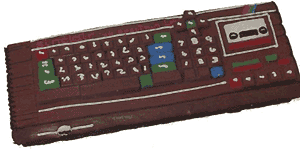

Наиболее интересной машиной был так называемый "Super Spectrum", кодовое имя Loki. Depending on which account one believes, название заимствовано у норвежского бога (знаменитого из-за своей любви к играм), или это сокращение слов "Low-cost Colour Computer", "LowCCC" или LC3. "Loki" должен был стать конкурентом Amiga, с обычной графикой и звуковыми чипами, "огромным" разрешением 512x256, поддерживающим до 256 цветов и 128K памяти. В компьютере также будет a fully-buffered expansion bus, RGB, composite and TV display outputs, серийный порт, two joystick ports, световое перо (supplied), three different types of MIDI port, stereo sound in and out, разъем наушников и a video recorder/video disc interface. On top of all of that, floppy disk, hard disk, compact disk, mouse and modem connectivity would also be available. This remarkable package would cost as little as £200. All of this was, of course, completely unrealistic and the specification amounted to little more than a wish-list. At the time, the Amiga, which was in some respects more limited than the Loki specification, cost ?1,500. Much of that cost was due to its sophisticated custom-designed hardware. The Loki would have cost millions to develop over a period of several years (the Amiga took four years) and a £200 price point was far too low if the developer expected to make any money back. In the event, the machine appears to have got no further than the design phase and was abandoned by Amstrad. Interestingly, however, its concepts did come to fruition in a very different form. After the Amstrad takeover, two ex-Sinclair engineers, John Mathieson and Martin Brennan, set up their own company called Flare, drawing on the Loki designs to produce a new multiprocessor games console. Atari were drawn into the project and, seeking to challenge the Sega Genesis/Megadrive and Super Nintendo, brought the machine to the market as the Atari Jaguar. According to Jaguar developer Andrew Whittaker, "Some of that [Loki] technology also found a home in a machine called the SAM Coupe, which was manufactured and produced in the UK by MGT technologies (Bruce Gordon and Alan Miles, both ex-Sinclair staff also). It shared many interesting features with the Jaguar in terms of its video chip, but the machine sold very badly in Europe and the company folded." |